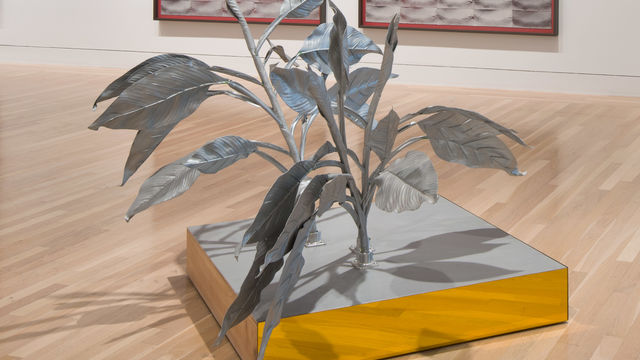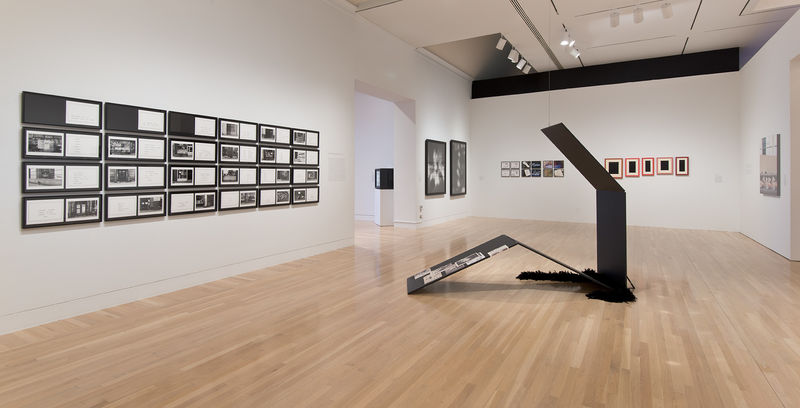
Tom Burr
Tom Burr's sculptures and installations function both as deep investigations of form, site, and material and as figures of a sort, each with its own temperament and history. Burr's explorations of formal inquiry, character development, and site-specificity are deliberately entwined. For him, nothing—no form—is autonomous or free from reference, and everything has a politics. Objects, in their very structure, openly admit to their historical, discursive, and contextual baggage. In this vein Burr often takes as his starting point a recognizable form or reference—whether it be the furnishings of a contained architectural space (such as a bathroom, bedroom, or movie theater) or the geometries and materials of minimalist sculpture (the work of Tony Smith or Richard Serra, for example).#
Rarely have bathrooms or minimalist works been celebrated for their attitude, their flamboyance, or their anxiety. Yet such (taboo) anthropomorphized experience is emphasized in Burr's work.# His sculptures pose, they vamp, they slouch. They wear feather boas and recline with magazines, as in Propped Perfume (2008), and often feel more like stage sets than functional spaces (or are meant to suggest that functional spaces are always also performative in nature). His 1997 exhibition at American Fine Arts gallery in New York, Stainless, explored the particularities, and various alternative modalities, of public bathrooms through works such as Single Partition Platform (1997), themselves often shown adjacent to Warhol-inspired monochrome silver plant forms like Silver Plant Platform (1997). Never is Burr's humor or theatricality wielded as an end in itself or as a cynical response to the solemnity or "neutrality" of earlier modalities of artistic production. Rather, these efforts are deployed as barometers for cultural signification and desire: to measure the effects of certain formal choices and to provide a ready platform for our own projections and mores. Indeed, far from so many careless jabs, Burr's works serve as a careful redress to an official history, recalling the marginalized, unsanctioned, or repressed narratives contained in an object or form. He is especially interested in the sorts of confined public spaces adopted by "underground" subcultures: sites for cruising or other socially and often legally restricted behavior (including bathrooms, movie theaters, and hedgerows).

Serra's Tilted Arc has a checkered and by now infamous history. Commissioned as a public sculpture for Federal Plaza in Manhattan, at 120 feet long and 12 feet high it was immediately the source of controversy—for rerouting pedestrians, dividing passable space, and obstructing vision. The sculpture was accused of being physically dangerous (because of its precarious angle) and for promoting criminal behavior (allowing people to conceal themselves behind it). But Burr picks up on another angle, that this sculpture could ostensibly provide a "safe zone" for cruising—for gay men seeking a place to meet anonymously and free from discrimination. Remaking the work amounts to an unexpected offering: wherever Deep Purple is installed, people are afforded semiprivacy in public space. Stability too is at play in both works: Serra's piece is engineered by weight and curvature to stand on its own and was designed for a single site. (He famously declared that its precise site-specificity meant that to move the piece was to destroy it, and indeed, after protracted public hearings, Tilted Arc was permanently removed from Federal Plaza and dismantled.) Burr's work, by contrast, requires steel supports in order to stand and is designed to be transported and resituated. Deep Purple is then, impossibly, a site-specific work that is intended for multiple sites and carries with it the history of its various placements. It thus proposes an allegorical notion of "site-specificity" that expands beyond the geographic—its site exists within the cultural consciousness and the historical imaginary.
—Leora Morinis

